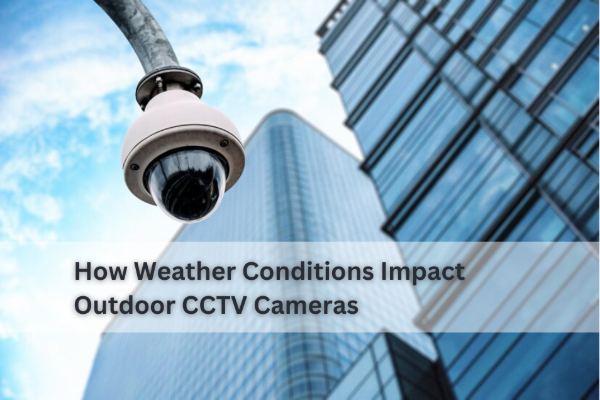Outdoor CCTV cameras play a crucial role in security and surveillance. However, different weather conditions can impact their performance, affecting image quality, durability, and functionality. Understanding these effects can help users choose the right cameras and take necessary precautions to ensure optimal operation.

1. Rain and Moisture
Impact:
- Water droplets on the camera lens can blur images, reducing visibility.
- Excess moisture can lead to internal damage if the camera is not properly sealed.
- Fogging inside the lens can obstruct the view.
Solution:
- Choose IP66 or IP67-rated waterproof cameras.
- Use weatherproof housings or protective covers.
- Ensure cameras have a built-in heater or anti-fogging feature.
2. Extreme Temperatures
Impact:
- Excessive heat can overheat camera components, reducing lifespan.
- Cold temperatures can affect battery performance and cause condensation inside the lens.
Solution:
- Select cameras with a wide operating temperature range (-30°C to 60°C).
- Install cameras with built-in heating or cooling systems for extreme climates.
- Use UV-resistant materials to prevent damage from prolonged sun exposure.
3. Snow and Ice
Impact:
- Snow buildup can obstruct the camera lens.
- Ice formation can freeze moving parts, such as PTZ (pan-tilt-zoom) cameras.
- Reflective snow can cause glare, reducing image clarity.
Solution:
- Position cameras under eaves or protective enclosures.
- Use cameras with defogging and de-icing capabilities.
- Adjust exposure settings to compensate for brightness and glare.
4. Wind and Storms
Impact:
- Strong winds can shake cameras, causing unstable footage.
- Debris can damage camera lenses or obstruct the field of view.
- Lightning strikes can damage electronic components.
Solution:
- Securely mount cameras using vibration-resistant brackets.
- Use surge protectors or lightning arresters for added protection.
- Regularly inspect and clean camera lenses from dirt and debris.
5. Fog and Humidity
Impact:
- High humidity can cause lens fogging and moisture buildup inside the camera.
- Foggy conditions reduce visibility and image sharpness.
Solution:
- Choose cameras with anti-fog and dehumidifying features.
- Install cameras in well-ventilated areas to prevent condensation.
- Use infrared (IR) or thermal cameras for improved visibility in foggy conditions.
Conclusion
Weather conditions can significantly affect the performance of outdoor CCTV cameras, but with the right equipment and precautions, these challenges can be managed effectively. Investing in weatherproof, temperature-resistant, and high-quality cameras ensures reliable security monitoring in any climate. Regular maintenance and strategic placement also contribute to enhanced durability and performance.
Find the perfect outdoor CCTV camera for your needs! Consult with us for expert advice and professional installation services.
